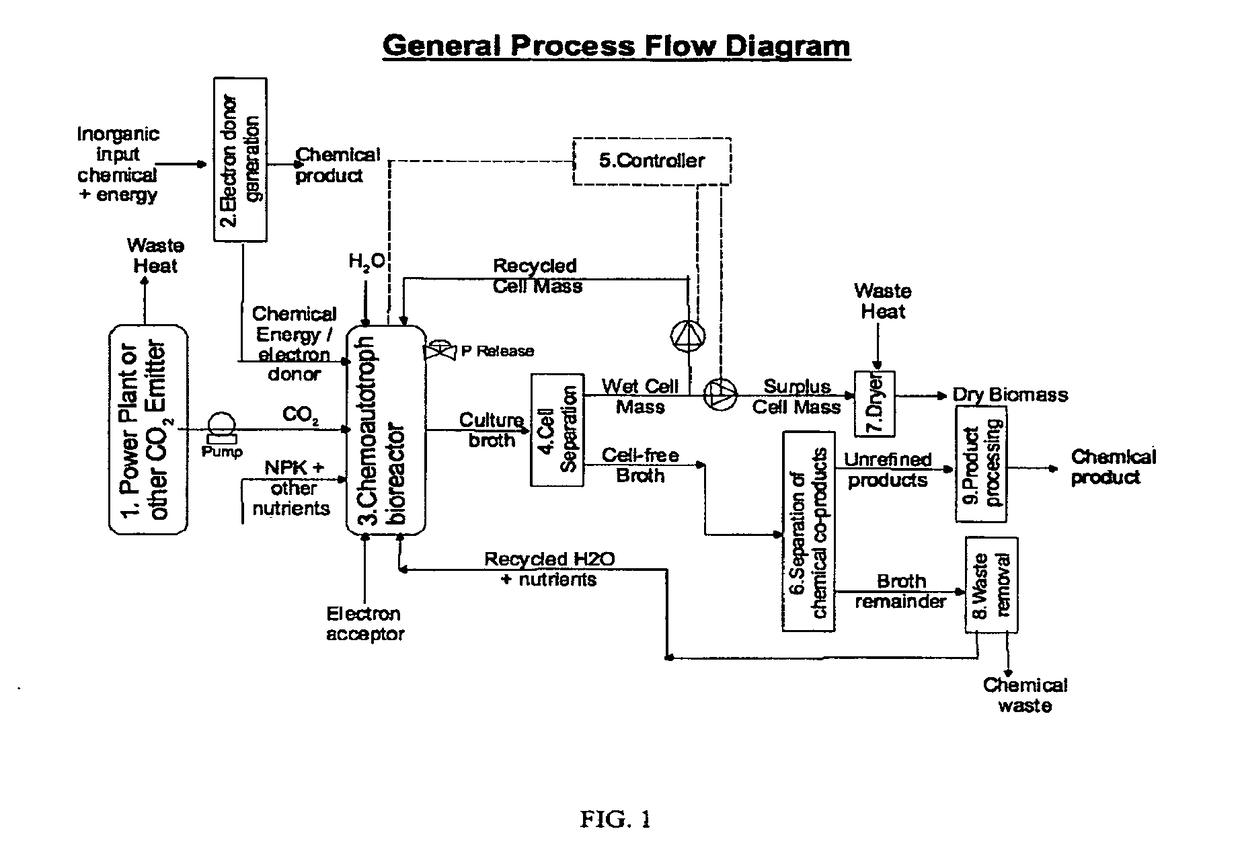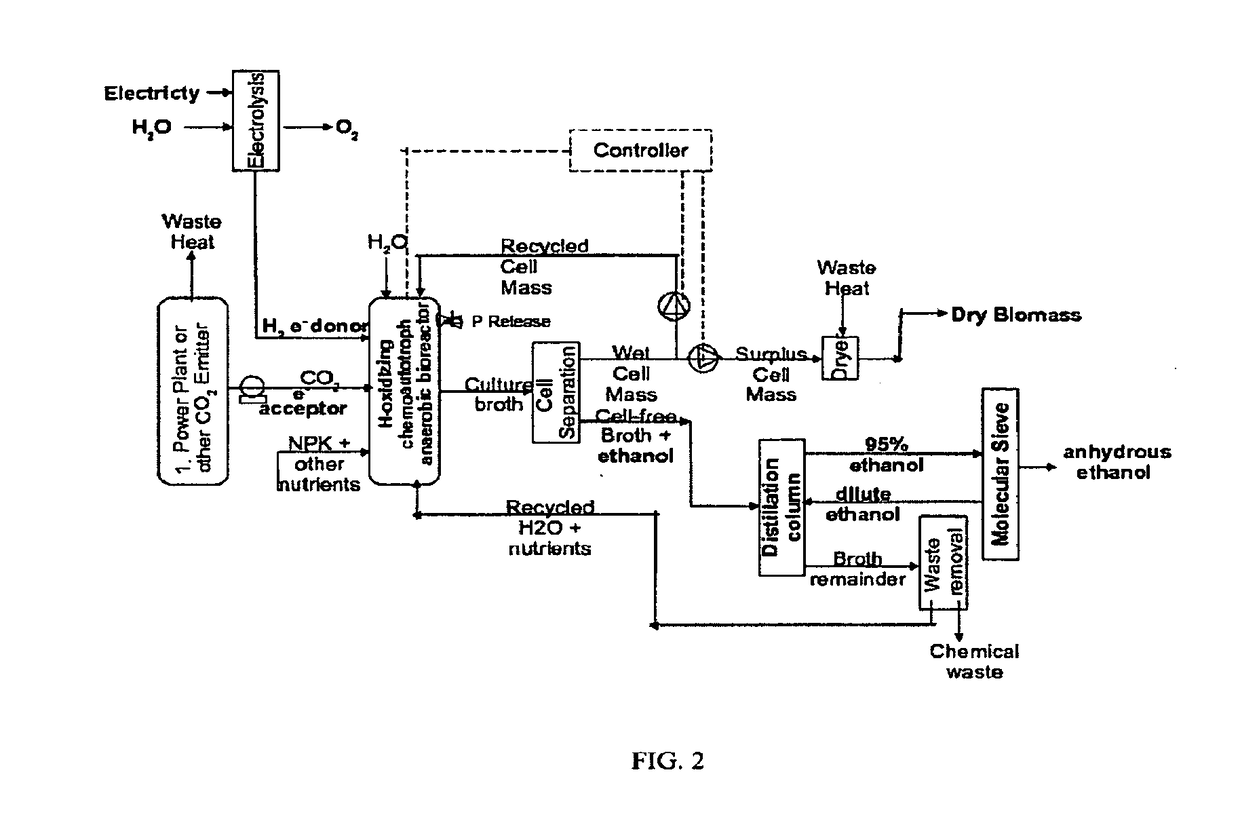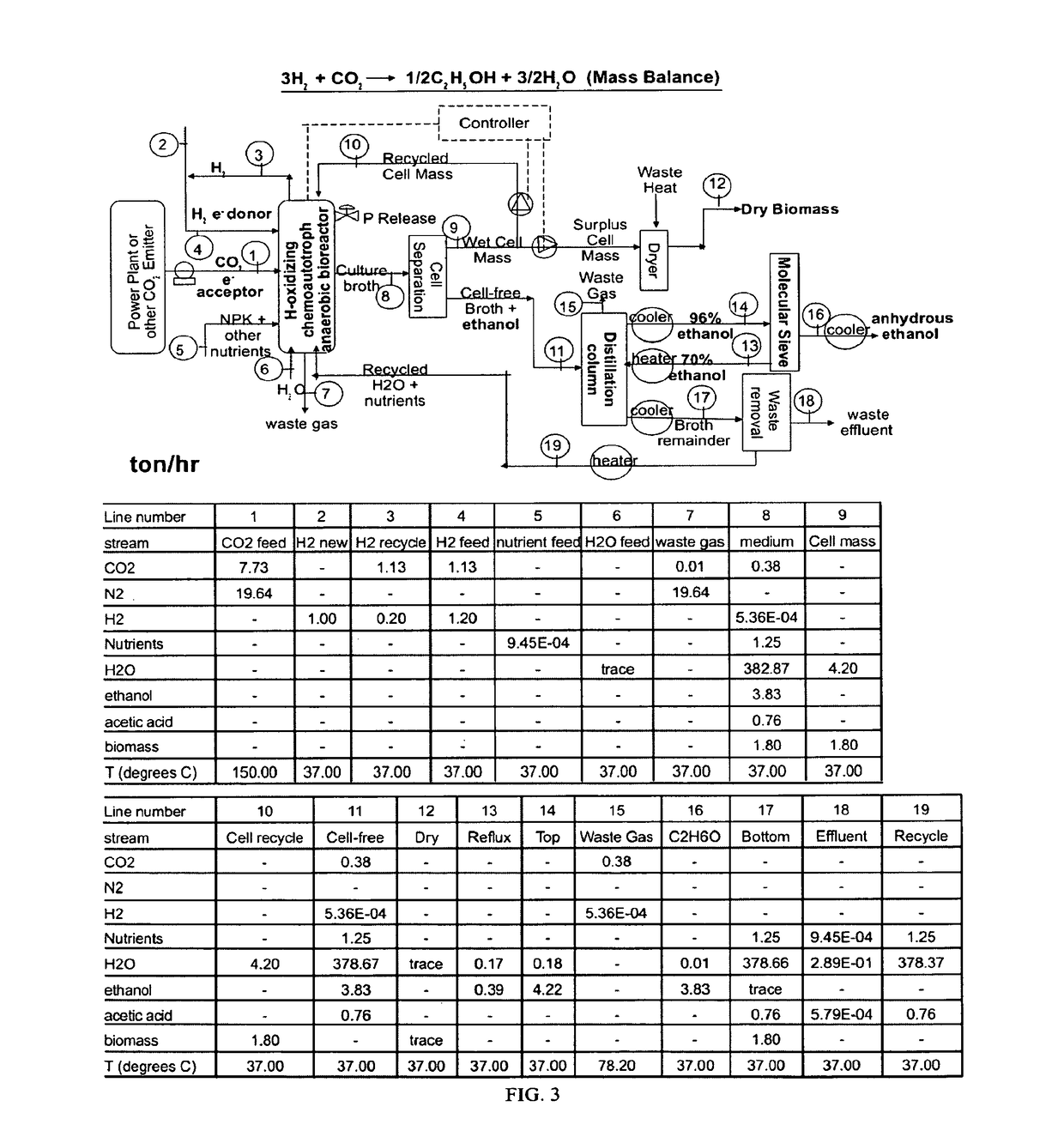Biological and Chemical Process Utilizing Chemoautotrophic Microorganisms for the Chemosynthetic Fixation of Carbon Dioxide and/or Other Inorganic Carbon Sources into Organic Compounds and the Generation of Additional Useful Products
a technology of chemoautotrophic microorganisms and organic compounds, which is applied in the direction of biochemical apparatus and processes, waste based fuels, biofuels, etc., can solve the problems of hydrogen and its own set of problems, and the sustainability of this progress now comes into question
- Summary
- Abstract
- Description
- Claims
- Application Information
AI Technical Summary
Benefits of technology
Problems solved by technology
Method used
Image
Examples
example
[0105]A specific working example is provided to demonstrate the carbon capture and fixation capabilities of chemoautotrophic microorganisms that play a central part in the overall carbon capture and fixation process of the present invention.
[0106]Tests were performed on the sulfur-oxidizing chemoautotroph Thiomicrospira crunogena ATCC #35932 acquired as a freeze dried culture from American Type Culture Collection (ATCC). The organisms were grown on the recommended ATCC medium—the #1422 broth. This broth consisted of the following chemicals dissolved in 1 Liter of distilled water:
[0107]NaCl, 25.1 g; (NH4)2SO4, 1.0 g; MgSO4.7 H2O, 1.5 g; KH2PO4, 0.42 g; NaHCO3, 0.20 g; CaCl2.2 H2O, 0.29 g; Tris-hydrochloride buffer, 3.07 g; Na2S2O3.5H2O, 2.48 g; Visniac and Santer Trace Element Solution, 0.2 ml; 0.5% Phenol Red, 1.0 ml;
[0108]The #1422 broth was adjusted to pH 7.5 and filter-sterilized prior to innoculation.
The freeze dried culture of Thiomicrospira crunogena was rehydrated according t...
PUM
| Property | Measurement | Unit |
|---|---|---|
| diameter | aaaaa | aaaaa |
| diameter | aaaaa | aaaaa |
| concentration | aaaaa | aaaaa |
Abstract
Description
Claims
Application Information
 Login to View More
Login to View More - R&D
- Intellectual Property
- Life Sciences
- Materials
- Tech Scout
- Unparalleled Data Quality
- Higher Quality Content
- 60% Fewer Hallucinations
Browse by: Latest US Patents, China's latest patents, Technical Efficacy Thesaurus, Application Domain, Technology Topic, Popular Technical Reports.
© 2025 PatSnap. All rights reserved.Legal|Privacy policy|Modern Slavery Act Transparency Statement|Sitemap|About US| Contact US: help@patsnap.com



